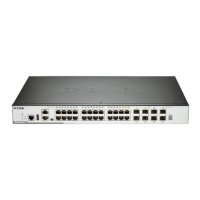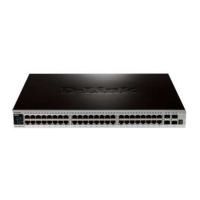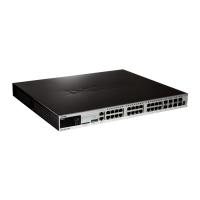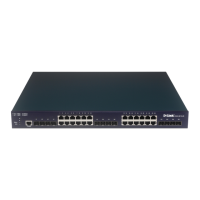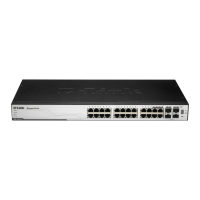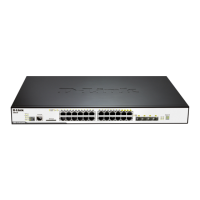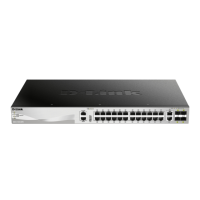DGS-3630 Series Layer 3 Stackable Managed Switch Web UI Reference Guide
245
Click the Back button to return to the previous window.
RIP Interface Settings
This window is used to display and configure the RIP interface settings.
To view the following window, click L3 Features > RIP > RIP Interface Settings, as shown below:
Figure 6-43 RIP Interface Settings Window
The fields that can be configured are described below:
Parameter Description
VRF Name
Enter the name of the VRF instance here. This name can be up to 12 characters
long.
Network
Enter the IPv4 network address used by RIP here. Interfaces that have a subnet
belonging to the network specified here will be activated for RIP.
Passive Interface
Select to enable or disable the passive interface feature here. This feature is used
to disable the sending and receiving of routing updates on an interface. However,
RIP packets from other routers received on this interface will continue to be
processed.
Enter the name of the passive interface in the space provided. This name can be
up to 12 characters long.
Select the Default option to use this as the default for all interfaces.
BFD State
Select to enable or disable the BFD feature on the specified interface. When BFD
is enabled on an interface, the router creates BFD peers with the current RIP
peers of the interface, and BFD peers will be created when new RIP peers are
added. If an RIP peer is removed because RIP is disabled, the related BFD peer
will be removed. When the BFD session goes down, the RIP routes learned from
the peer will be deleted.
Click the Apply button to accept the changes made.
Click the Delete button to delete an entry based on the information entered.
RIP Database
This window is used to display the Routing Information Protocol (RIP) routing database. Summary address entries will
appear in the database only if relevant child routes exist and are being summarized. When the last child route for a
summary address becomes invalid, the summary address is also removed from the routing table.
To view the following window, click L3 Features > RIP > RIP Database, as shown below:
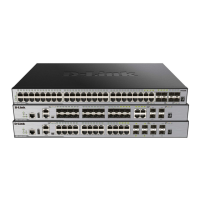
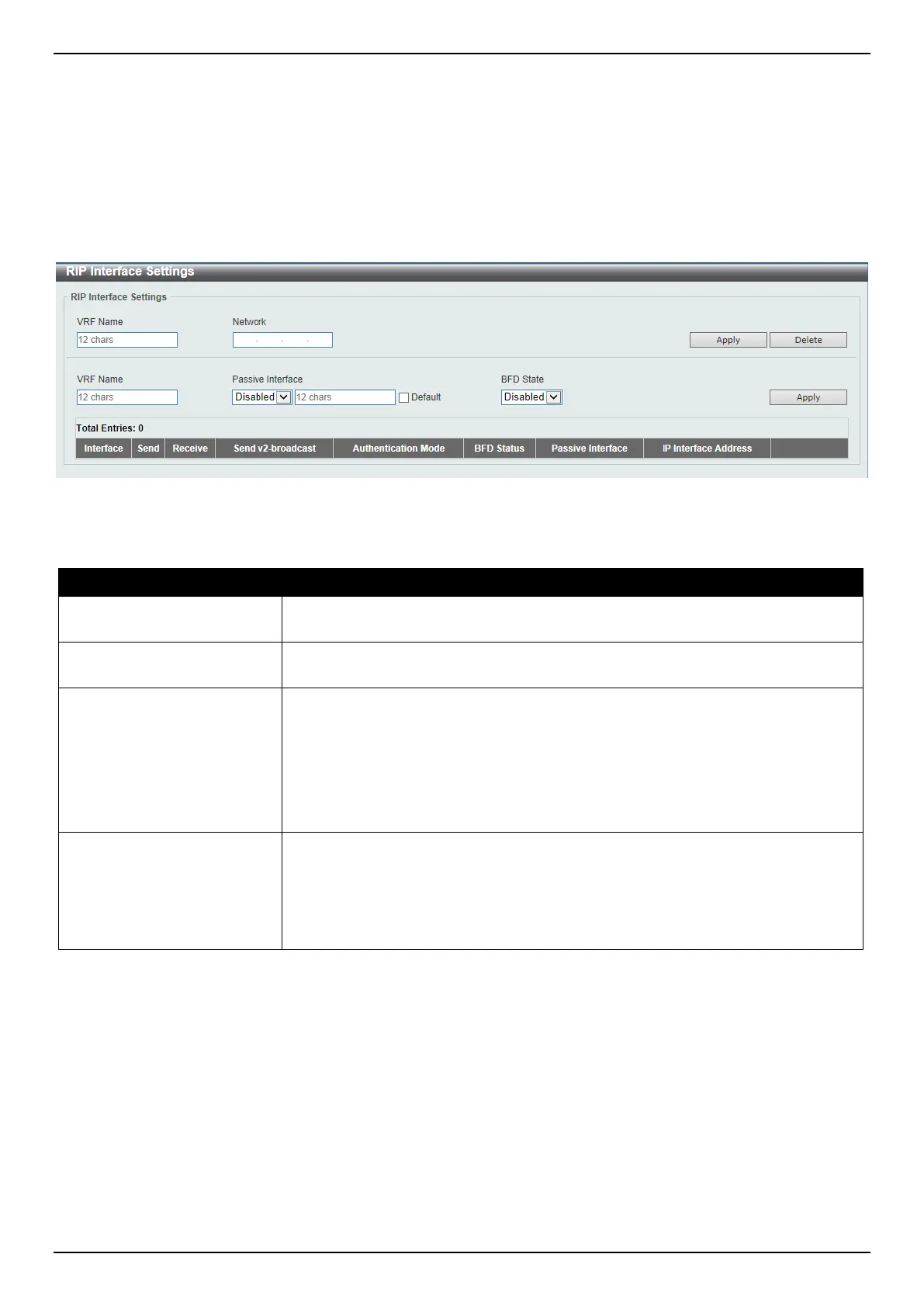